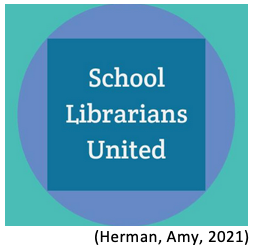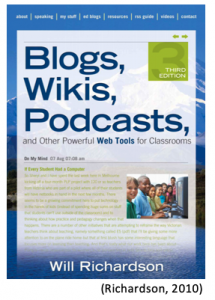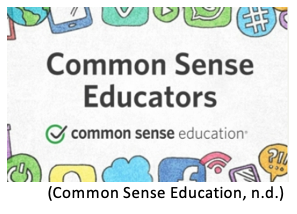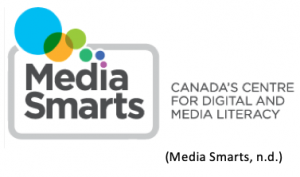Tools, Tricks and Ways to Utilize Audio Production in an LLC Program
 My research process for the Reading Review Part A and Part B of the assignment helped me narrow my topic and I was able to source a number of academic resources. I discovered, that for Reading Review Part C, the traditional searching avenues: looking at eBooks, databases and journals limited my research and didn’t include enough practical application ideas. When I opened up my search on how to include audio/video production in an LLC program, I discovered that many of my resources branched into blogs, Apps, YouTube videos and podcasts. Whilst this next step of research lead me to less traditionally cited references they offered practical based ideas shared by experts in the field. My resources below are separated into three categories: why, how, and extra teacher tools.
My research process for the Reading Review Part A and Part B of the assignment helped me narrow my topic and I was able to source a number of academic resources. I discovered, that for Reading Review Part C, the traditional searching avenues: looking at eBooks, databases and journals limited my research and didn’t include enough practical application ideas. When I opened up my search on how to include audio/video production in an LLC program, I discovered that many of my resources branched into blogs, Apps, YouTube videos and podcasts. Whilst this next step of research lead me to less traditionally cited references they offered practical based ideas shared by experts in the field. My resources below are separated into three categories: why, how, and extra teacher tools.
INQUIRY 1 - Why incorporate audio or video production in an LLC Program?
Resources consider:
- How does audio or video production foster media literacy in students?
Boggs, G. L., Fendler, R., Shields, S. S., Tripp, L. M., Pengelley, I. R., & Zenkov, K. (2017). Partnership Literacies: Who’s Got the Camera? Journal of Adolescent & Adult Literacy, 61(2), 213–216. https://doi-org.ezproxy.library.ubc.ca/10.1002/jaal.680
-
- The majority of the articles I have included in Part C of this assignment emphasize the practical application of how can I integrate audio/video production in a makerspace and link that to promoting literacy within the LLC program. There were a number of articles from my search, however, that focus on the WHY. I have selected the top two for this selection of resources, but I had well over 15 in my research and some that I explored in Part B are part of that list. The significant drawback with much of this type of research, is that though it explores pedagogy, it doesn’t offer a host of practical suggestions on how to apply the ideology explored into an LLC program.
- “Partnership Literacies: Who’s Got the Camera?”, explores how student learning can be integrated in multimedia projects like video, but not take the fun out of the process and learning. I liked how this article focuses on video production and ties in the various literacies that the multimedia platform fosters. Similar to Richardson’s Why School, Partnership Literacies, explores the value of “transferring the power” (Richardson, 2012) and enable students to ‘hold the camera’ thereby discovering their learning process as opposed to having it delivered by educators. This helps students to meaningfully build on their media literacy skills.
Regan, B. (2008). Why We Need to Teach 21st Century Skills–And How to Do It. MultiMedia & Internet@Schools, 15(4), 10–13.
-
- This article by Bob Regan is older but I found it helpful as it sent me forward in other directions that have been useful on this search. Regan’s article explores also explores the WHY. Why are collaborative technologies in a school so important? This article helps reinforce the justification for building more collaborative technology in an LLC program and also poses critical questions and awareness that “students have the opportunity to view and learned from the work of students not just in their class, but worldwide, cultivating a 21st skill of global awareness” (Regan, 2008, p. 12).
- This article prompted me to look up the Partnership for 21st Century Skills framework which offers a framework and a variety of resources that are useful to educators with teaching media literacy. I found Regan’s justification and philosophical connections to why we should include teaching media literacy as an essential component to education in high school thoughtful and it prompted me to explore other key words from his paper that helped me find other useful research, tools and links.
INQUIRY 2 - How to implement audio/video production in an LLC Program?
Resources consider:
- What strategies, software and techniques can a TL use for audio production in an LLC program?
- How can these strategies be accessible and be used over the curriculum and appeal to a wide community base of teachers and students?
Audacity: Audacity Team (2021): Audacity (Version 2.4.2) [Computer program]. Retrieved from http://audacityteam.org/
-
- This inclusion is more of a tool than website analysis. I am including Audacity because it is free, open-source, cross-platform audio software that “is an easy-to-use, multi-track audio editor and recorder for Windows, macOS, GNU/Linux and other operating systems.” (Audacity, n.d.)
- First released in 2000, and has more than 100 million downloads, Audacity offers a platform that enables users to record and edit out the ‘er’, ‘umms’ and pauses from their podcasts. It records live audio, enables cutting, mixing and has the ability to add in effects whether it is for speed or pitch. The import and export features enable files to be WAV, AIFF, MP3, AU, FLAC and Ogg Vorbis, which means that there is flexibility for compatibility of use with a variety of different programs/apps and devices.
- When I downloaded Audacity, I liked that there wasn’t a requirement to set up an account with Audacity to get the features and access the program. As it is open-sourced, there are privacy risks that would need to have more risk assessment undertaken before being rolled out in an LLC program.
ALCTS – A Division of the ALA. (2014). “Podcasts: What Are They and What Role Can Librarians Play?”. Retrieved from http://www.ala.org/alcts/confevents/upcoming/webinar/101514
-
- This is an interesting link that offers a webinar for Librarians that are interested in “organizing and marketing podcasts” (ALCTS, 2014).
- This resource is a professional development teaching tool that offers a YouTube presentation, slides and handouts. The presentation itself is informative and is intended for Liberians.
Herman, Amy. (2021). “Broadcasting From our Libraries”. School Librarians United. Podcast. Retrieved from https://schoollibrariansunited.libsyn.com/broadcasting-from-our-libraries
-
- In my search for how to include audio production in a LLC program, I dis
 covered School Librarians United with Amy Hermon. This is a “podcast dedicated to the nuts and bolts of running a successful school library.” Started in 2018, there are now over 38 podcasts that have been released exploring topics that center around a LLC program and range from discussions about, collaboration, graphic novels, classroom libraries, self-censorship and weeding.
covered School Librarians United with Amy Hermon. This is a “podcast dedicated to the nuts and bolts of running a successful school library.” Started in 2018, there are now over 38 podcasts that have been released exploring topics that center around a LLC program and range from discussions about, collaboration, graphic novels, classroom libraries, self-censorship and weeding. - Though Michigan based TL, Amy Hermon, is an elementary school librarian, the topics are relevant to all TLs and I found the Podcast on “Broadcasting from our Libraries”. This podcast shares resources and strategies that TLs can use should they wish to broadcast from their own LLC. The focus of the podcast is on building community and fostering a community of readers.
- In my search for how to include audio production in a LLC program, I dis
Johnson, Doug. (2019). “The School Librarian: Your Ultimate Digital Resource”. The Tech Savvy School. Educational Leadership. 76(5). Retrieved from http://www.ascd.org/publications/educational-leadership/feb19/vol76/num05/The-School-Librarian@-Your-Ultimate-Digital-Resource.aspx
-
- Doug Johnson’s article explores the need for “future-ready librarians” (Johnson, 2019). He discusses the six roles that ‘digital librarians’ fill in today’s school libraries.
-
-
 Curating resources to support individualized instruction
Curating resources to support individualized instruction- Sharing expertise in locating and evaluating resources
- Helping students—and teachers—produce digital content
- Being the “digital copyright guru”
- Teaching digital citizenship and online safety
- Planning and managing school maker-spaces (Johnson, 2019)
-
-
- I found the sections on helping students and teachers to produce digital content as well as planning and managing school maker-spaces to be the most useful sections to me in the article. The context of the article is from a teacher- librarian perspective and is useful because it provides practical suggestions of how TLs can support teachers in a school with the production of digital content in their classes. The only downside to this article is that I wanted more! This article is contemporary, practical and useful for TLs that are looking to expand their digital role within the LLC program
Richardson, W. (2010). Blogs, wikis, podcasts, and other powerful web tools for classrooms. Corwin. [Kindle Edition]
-
- This eBook offers practical suggestions on how blogs, wikis and podcasts can be used over a number of curricular areas. My focus was on audio and video production, so I focused on “Podcasting, Video and Screencasting, and Live Streaming: Multimedia Publishing for the Masses” (Richardson, 2010, ch. 8).
 Richardson rationalizes that “podcasting is yet another way for them [students] to be creating and contributing ideas to a larger conversation, and it’s a way of archiving that contribution for future audiences to use” (Richardson, 2010, ch. 8). I found suggestions of how podcasts could be used for reading workshops, language practice lessons, storytelling, oral histories, interviews, historical re-enactments, lab or dissertation narratives, recitals, or for special events. The ideas demonstrate how audio production can benefit a wide range of subject areas and helped me see how it could be a valuable inclusion in a LLC makerspace.
Richardson rationalizes that “podcasting is yet another way for them [students] to be creating and contributing ideas to a larger conversation, and it’s a way of archiving that contribution for future audiences to use” (Richardson, 2010, ch. 8). I found suggestions of how podcasts could be used for reading workshops, language practice lessons, storytelling, oral histories, interviews, historical re-enactments, lab or dissertation narratives, recitals, or for special events. The ideas demonstrate how audio production can benefit a wide range of subject areas and helped me see how it could be a valuable inclusion in a LLC makerspace.- Blogs, Wikis and Podcasts was useful in providing program suggestions. I found some useful ideas like Audacity and PodOmatic. The drawback of the date of the eBook, was that I wasn’t entirely confident that these suggestions still held the same value they did in 2010.
Extra Teacher Tool Sites:
- Common Sense Education
 I found this site holds a lot of useful information regarding education technology and specifically reviews. For example, Audacity, is a program for podcasting that I’d like to learn more about from a third party. Commonsense.org provides their take on the pros, cons and bottom line for this software in the context of educational use. What is also a great feature, is that below their rating, there is also space for community reviews which I was able to go through. Sites like Commonsense.org are helpful to reflect on when researching education technology.
I found this site holds a lot of useful information regarding education technology and specifically reviews. For example, Audacity, is a program for podcasting that I’d like to learn more about from a third party. Commonsense.org provides their take on the pros, cons and bottom line for this software in the context of educational use. What is also a great feature, is that below their rating, there is also space for community reviews which I was able to go through. Sites like Commonsense.org are helpful to reflect on when researching education technology. - Media Smarts – Canada’s Center for Digital and Media Literacy.
 “Media Smarts is a Canadian not-for-profit charitable organization for digital and media literacy.” What I like about Media Smarts is that it has a Canadian focus and it offers practical, useful teacher resources. Some of these resources I plan to adapt and use.
“Media Smarts is a Canadian not-for-profit charitable organization for digital and media literacy.” What I like about Media Smarts is that it has a Canadian focus and it offers practical, useful teacher resources. Some of these resources I plan to adapt and use. - NPRs – A Studio at your Fingertips: Five Apps Teachers are Using to Make Student Podcasts. This singular webpage offers helpful information about podcast Apps for students to use. It is current and I have placed it into General Teacher tools for me to reflect on in future. Additionally, NPR offers a Student Podcast Challenge and there are many student related links within this section that can be accessed.
Concluding Thoughts:
The search to find resources for including audio production in an LLC program started with a broad approach that led me to theoretical papers that offered reflective ideology on why multimedia production in education is a necessary tool in developing media literacy. These papers and links lead me to more practical application sites that offered tools and tricks on how to implement video and audio production. They introduced me to software ideas like Audacity and Garage Band and hosting sites like PodOmatic.
Bibliography:
Adame, Diane. (2020) “A Studio at Your Fingertips: 5 Apps Teachers Are Using To Make Student Podcasts”. Retrieved from https://www.npr.org/2020/02/21/807372536/a-studio-at-your-fingertips-5-apps-teachers-are-using-to-make-student-podcasts.
ALCTS – A Division of the ALA. (2014). “Podcasts: What Are They and What Role Can Librarians Play?”. Retrieved from http://www.ala.org/alcts/confevents/upcoming/webinar/101514
Audacity Team (2021): Audacity (Version 2.4.2) [Computer program]. Retrieved from http://audacityteam.org/
Boggs, G. L., Fendler, R., Shields, S. S., Tripp, L. M., Pengelley, I. R., & Zenkov, K. (2017). Partnership Literacies: Who’s Got the Camera? Journal of Adolescent & Adult Literacy, 61(2), 213–216. https://doi-org.ezproxy.library.ubc.ca/10.1002/jaal.680
Common Sense Education. (n.d.). Education. Retrieved from https://www.commonsense.org/education/
Educational Leadership. (2019). [Image]. Retrieved from http://www.ascd.org/publications/educational-leadership/feb19/vol76/num05/The-School-Librarian@-Your-Ultimate-Digital-Resource.aspx
Herman, Amy. (2021). “Broadcasting From our Libraries”. School Librarians United. Podcast. Retrieved from https://schoollibrariansunited.libsyn.com/broadcasting-from-our-libraries
Johnson, Doug. (2019). “The School Librarian: Your Ultimate Digital Resource”. The Tech Savvy School. Educational Leadership. 76(5). Retrieved from http://www.ascd.org/publications/educational-leadership/feb19/vol76/num05/The-School-Librarian@-Your-Ultimate-Digital-Resource.aspx
Media Smarts. (n.d). Teacher Resources. Retrieved from https://mediasmarts.ca/teacher-resources
Regan, B. (2008). “Why We Need to Teach 21st Century Skills–And How to Do It.” MultiMedia & Internet@Schools, 15(4), 10–13.
Richardson, W. (2010). Blogs, wikis, podcasts, and other powerful web tools for classrooms. SAGE Publications. Kindle Edition.
Richardson, W. (2012). Why School?: How Education Must Change When Learning and Information Are Everywhere. TED Conferences. Kindle Edition.
Yesayn, N. (2021). “Augmented Reality and Education: Benefits and a List of Best 2020 AR Apps”. IT Craft. [Image]. Retrieved from https://itechcraft.com/augmented-reality-and-education/


 Follow
Follow